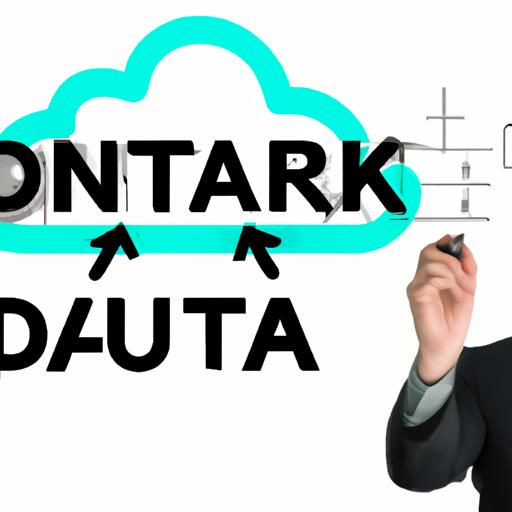In today’s digital world, data plays a pivotal role in the success of businesses. From customer information to financial records, losing critical data can be catastrophic. That’s where cloud backup and recovery come into play. In this article, we will explore the fundamental aspects of cloud backup and recovery, its significance, and the benefits it offers to businesses like yours.
Definition and Importance of Cloud Backup and Recovery
Cloud backup and recovery refer to the process of storing important data securely in remote servers, often referred to as the cloud, and retrieving it when needed. This approach ensures that your valuable information remains safe and accessible, even in the face of unforeseen events such as hardware failures, natural disasters, or cyberattacks.
The importance of cloud backup and recovery cannot be overstated. Traditional backup methods, such as physical storage devices, are vulnerable to theft, damage, or loss. On the other hand, cloud-based solutions provide a robust and reliable alternative. By entrusting your data to the cloud, you mitigate the risks associated with on-premises storage and gain peace of mind knowing that your information is protected.
Benefits of Cloud Backup and Recovery for Businesses
Implementing cloud backup and recovery offers a multitude of benefits for businesses of all sizes. Firstly, it ensures data redundancy, meaning your information is stored in multiple locations. This redundancy minimizes the chances of data loss, even if one server or location experiences an issue.
Secondly, cloud backup and recovery provide seamless scalability. As your business grows and generates more data, you can easily expand your storage capacity without the need for additional physical hardware. This flexibility allows you to adapt to changing data storage needs and eliminates the hassle of managing on-premises infrastructure.
Furthermore, cloud-based solutions offer enhanced data security. Reputable providers employ robust encryption protocols and stringent access controls to safeguard your information. This level of security surpasses what most businesses can achieve on their own, providing an extra layer of protection against unauthorized access or data breaches.
In conclusion, cloud backup and recovery are indispensable tools for safeguarding your business data. By embracing this technology-driven approach, you can ensure the continuity of your operations, protect sensitive information, and stay one step ahead in an increasingly digital landscape. In the following sections, we will delve deeper into the specifics of cloud backup and recovery, enabling you to make informed decisions and implement best practices. So, let’s explore the world of cloud-based data protection together!
Understanding Cloud Backup
In order to harness the power of cloud backup effectively, it’s essential to have a clear understanding of what it entails, how it functions, and the various types of solutions available.
What is Cloud Backup?
Cloud backup is a method of securely storing copies of your data in remote servers, which are typically managed by a third-party provider. This approach eliminates the need for physical storage devices and allows you to access and restore your data from anywhere with an internet connection. Unlike traditional backup methods, cloud backup offers greater convenience, scalability, and reliability.
How Cloud Backup Works
The process of cloud backup involves several key steps. First, your data is encrypted and transmitted to the remote servers over an internet connection. This encryption ensures that your information remains protected during transit and at rest on the cloud servers. Once the data reaches the cloud, it is stored in redundant storage systems, typically spread across multiple data centers. This redundancy ensures that even if one server or data center experiences an issue, your data remains intact and accessible.
To facilitate data retrieval, cloud backup solutions often provide user-friendly interfaces or applications. These interfaces allow you to select specific files or folders for backup, schedule automatic backups at regular intervals, and restore data when needed. The backup process can be tailored to your preferences, allowing you to choose the frequency and scope of backups based on your business requirements.
Types of Cloud Backup Solutions
When it comes to cloud backup, different solutions cater to varying needs and preferences. Here are a few common types:
-
Full Cloud Backup: This approach involves backing up all the data on your devices or servers to the cloud. It offers comprehensive protection but may require more storage space and time for backups.
-
Incremental Cloud Backup: In this method, only the changes made since the last backup are stored in the cloud. This reduces storage requirements and backup time, making it an efficient option for businesses with large data volumes.
-
Hybrid Cloud Backup: This solution combines both on-premises and cloud backup strategies. It allows you to store critical data locally while leveraging the cloud for additional storage and redundancy.
By understanding these different types of cloud backup solutions, you can identify the one that aligns best with your business needs and data protection goals. In the next section, we will delve into the world of cloud recovery, exploring how it complements cloud backup to ensure comprehensive data resilience. So, let’s proceed to Section 3 and unlock the power of cloud recovery together!
Exploring Cloud Recovery
In Section 3, we will dive deeper into the concept of cloud recovery, its significance in data loss scenarios, and the various types of cloud recovery solutions available.
What is Cloud Recovery?
Cloud recovery is the process of restoring data and systems from cloud-based backups in the event of data loss or system failure. It involves retrieving the stored data from the cloud and recovering it to its previous state, ensuring business continuity and minimizing downtime.
Cloud recovery offers a reliable and efficient solution for businesses, as it eliminates the need for physical backups and the associated risks of loss or damage. By leveraging the cloud, organizations can store their critical data in secure off-site locations, allowing for seamless and swift recovery whenever needed.
Importance of Cloud Recovery in Data Loss Scenarios
Data loss can occur due to various reasons, such as hardware failures, accidental deletions, malware attacks, or natural disasters. In such situations, the ability to quickly recover data is crucial for businesses to resume operations and prevent significant financial and reputational damage.
Cloud recovery provides a lifeline for businesses facing data loss scenarios. By having backups stored in the cloud, organizations can easily retrieve their data and restore systems to a functional state. This minimizes the impact of data loss, reduces downtime, and enables businesses to get back on track swiftly.
Types of Cloud Recovery Solutions
Cloud recovery solutions come in different forms, tailored to meet specific business needs. Here are a few types of cloud recovery solutions commonly used:
1. File-Level Recovery
File-level recovery allows businesses to restore individual files or folders from their cloud backups. This type of recovery is useful for accidental file deletions or when specific files need to be retrieved without affecting the entire system.
2. Image-Based Recovery
Image-based recovery involves restoring an entire system or server from a cloud backup. It creates a replica of the entire operating system, including settings, applications, and data. This type of recovery is ideal for complete system failures or when migrating to new hardware.
3. Virtual Machine Recovery
Virtual machine recovery allows businesses to recover virtualized environments, such as virtual servers or desktops, from cloud backups. This type of recovery is beneficial for organizations utilizing virtualization technologies, as it enables quick restoration of entire virtual machines.
By understanding the different types of cloud recovery solutions available, businesses can choose the most appropriate option based on their specific recovery needs and infrastructure.
In the next section, we will discuss the considerations and factors to keep in mind when selecting the right cloud backup and recovery solution for your business. So, let’s move forward and explore the aspects to consider in Section 4!
Choosing the Right Cloud Backup and Recovery Solution
When it comes to selecting a cloud backup and recovery solution, the choices available can be overwhelming. To ensure you make the best decision for your business, there are several key factors to consider. Let’s explore these factors and help you navigate through the sea of options.
Factors to Consider When Selecting a Cloud Backup and Recovery Provider
-
Reliability and Reputation: It is crucial to choose a reputable cloud backup and recovery provider with a track record of delivering reliable services. Look for providers with positive customer reviews, industry recognition, and a proven history of data protection.
-
Data Security: The security of your data should be a top priority. Evaluate the provider’s security measures, including encryption protocols, access controls, and compliance with industry standards such as GDPR or HIPAA. Ensure they have robust security practices in place to safeguard your sensitive information.
-
Ease of Use and User Interface: A user-friendly interface is essential, as it simplifies the backup and recovery process. Look for intuitive features, easy-to-navigate dashboards, and straightforward setup procedures. A solution that is simple to use will save you time and reduce the learning curve for your team.
Evaluating Security and Privacy Measures
-
Encryption and Data Protection: Ensure that the cloud backup and recovery solution you choose offers robust encryption mechanisms. Look for end-to-end encryption, both in transit and at rest, to protect your data from unauthorized access. Additionally, consider providers that offer data deduplication and compression to optimize storage efficiency.
-
Data Privacy and Compliance: Verify that the provider adheres to applicable data privacy regulations and industry compliance standards. This is particularly crucial if you handle sensitive customer information or operate in industries with strict data protection requirements. Confirm the provider’s commitment to privacy and their willingness to sign data processing agreements.
Scalability and Flexibility of Cloud Backup and Recovery Solutions
-
Scalability: As your business grows, your data storage needs will increase. Choose a provider that offers scalable options, allowing you to expand your storage capacity effortlessly. This ensures that your backup and recovery solution can accommodate your evolving needs without disruptions.
-
Flexibility and Compatibility: Consider your existing technology infrastructure and ensure that the cloud backup and recovery solution integrates seamlessly with your current systems. Compatibility with various operating systems and platforms, such as Windows, Mac, or Linux, is essential to ensure a smooth transition and efficient data management.
By carefully considering these factors, you can select a cloud backup and recovery solution that aligns with your business requirements, provides robust security measures, and offers the scalability and flexibility needed for future growth. Remember, investing time in research and evaluation upfront will pay off in the long run, providing you with a reliable and effective data protection solution.
Best Practices for Implementing Cloud Backup and Recovery
When it comes to implementing cloud backup and recovery, having a well-defined strategy is crucial. This section will outline some best practices to ensure that your cloud backup and recovery efforts are effective and reliable.
Setting up an Effective Cloud Backup and Recovery Strategy
A solid strategy is the foundation of successful cloud backup and recovery. Start by identifying your critical data and prioritize its protection. Determine the frequency of backups based on the importance and volatility of the data. Remember to consider both the volume and the rate of change of your data when establishing backup schedules.
Additionally, consider the retention period for your backups. Retaining backups for an appropriate duration ensures that you can recover data from various points in time, reducing the risk of data loss. Regularly reassess and update your backup strategy as your business evolves and data requirements change.
Regular Backup Schedules and Testing Procedures
Regular backups are essential to maintain data integrity and minimize the risk of significant data loss. Establish a consistent backup schedule that aligns with your business needs and ensures that critical data is protected in a timely manner. Automating the backup process can streamline operations and reduce the chances of human error.
However, backups alone are not enough. Regularly testing your backups is equally important. Conduct periodic restoration tests to verify that the backed-up data can be successfully recovered. This process helps identify any issues or potential gaps in your backup and recovery system, allowing you to address them proactively.
Disaster Recovery Planning with Cloud Solutions
While cloud backup provides an added layer of protection, it’s crucial to have a comprehensive disaster recovery plan in place. Identify potential risks and create a step-by-step plan to recover your data and restore operations in the event of a disaster. Consider factors such as data prioritization, recovery time objectives (RTO), and recovery point objectives (RPO) when crafting your plan.
Regularly review and update your disaster recovery plan to ensure its effectiveness. Conduct drills and simulations to test the plan’s viability and identify areas for improvement. By being prepared for potential disasters, you can minimize downtime, ensure business continuity, and protect your valuable data.
In summary, implementing cloud backup and recovery best practices involves establishing a robust strategy, adhering to regular backup schedules, and creating a comprehensive disaster recovery plan. By following these guidelines, you can enhance the reliability and effectiveness of your cloud backup and recovery efforts, safeguarding your business against data loss and maximizing operational continuity.
Future Trends in Cloud Backup and Recovery
The technology landscape is constantly evolving, and cloud backup and recovery are no exception. As businesses continue to prioritize data protection and disaster recovery, new trends and advancements emerge to meet their evolving needs. Let’s explore some of the future trends shaping the realm of cloud backup and recovery.
Emerging Technologies in Cloud Backup and Recovery
One of the key trends in cloud backup and recovery is the integration of artificial intelligence (AI) and machine learning (ML) technologies. These advanced capabilities enable intelligent data management, automated backups, and proactive identification of potential vulnerabilities or data anomalies. With AI and ML, businesses can optimize their backup processes, reduce downtime, and enhance overall data security.
Another emerging technology is blockchain. While primarily associated with cryptocurrencies, blockchain’s decentralized and immutable nature has the potential to revolutionize cloud backup and recovery. By leveraging blockchain, businesses can create a transparent and tamper-proof audit trail of data backups, ensuring the integrity and authenticity of their stored information.
Predictions for the Future of Cloud Backup and Recovery
Looking ahead, we can expect cloud backup and recovery to become more streamlined and efficient. Advances in data deduplication and compression techniques will optimize storage utilization and reduce costs. Additionally, cloud providers will likely introduce more granular recovery options, allowing businesses to restore specific files or even individual data elements, rather than the entire backup set.
Furthermore, hybrid cloud backup solutions will gain prominence. Combining the benefits of both on-premises and cloud storage, hybrid models offer increased control over data and enable faster recovery times. This approach strikes a balance between security, compliance, and cost-effectiveness, providing businesses with greater flexibility and control over their backup and recovery strategies.
Importance of Staying Updated with Cloud Backup and Recovery Trends
To fully leverage the potential of cloud backup and recovery, it is crucial to stay informed about the latest industry trends and advancements. By keeping an eye on emerging technologies, you can identify opportunities to enhance your data protection practices, improve efficiency, and stay ahead of potential risks.
Moreover, partnering with a reputable cloud backup and recovery provider is vital. Look for providers who actively invest in research and development, ensuring that their solutions align with the latest industry standards and innovations. Regularly evaluating and updating your backup and recovery strategy will help you optimize data protection, minimize downtime, and ensure business continuity in the face of any adversity.
In conclusion, the future of cloud backup and recovery holds exciting possibilities. With the integration of AI, blockchain, and other emerging technologies, businesses can expect enhanced efficiency, flexibility, and security in their data protection practices. By staying informed and embracing these trends, you can safeguard your valuable information and maintain a competitive edge in the digital landscape. So, don’t hesitate to explore the ever-evolving world of cloud backup and recovery and unlock the full potential of data protection.



